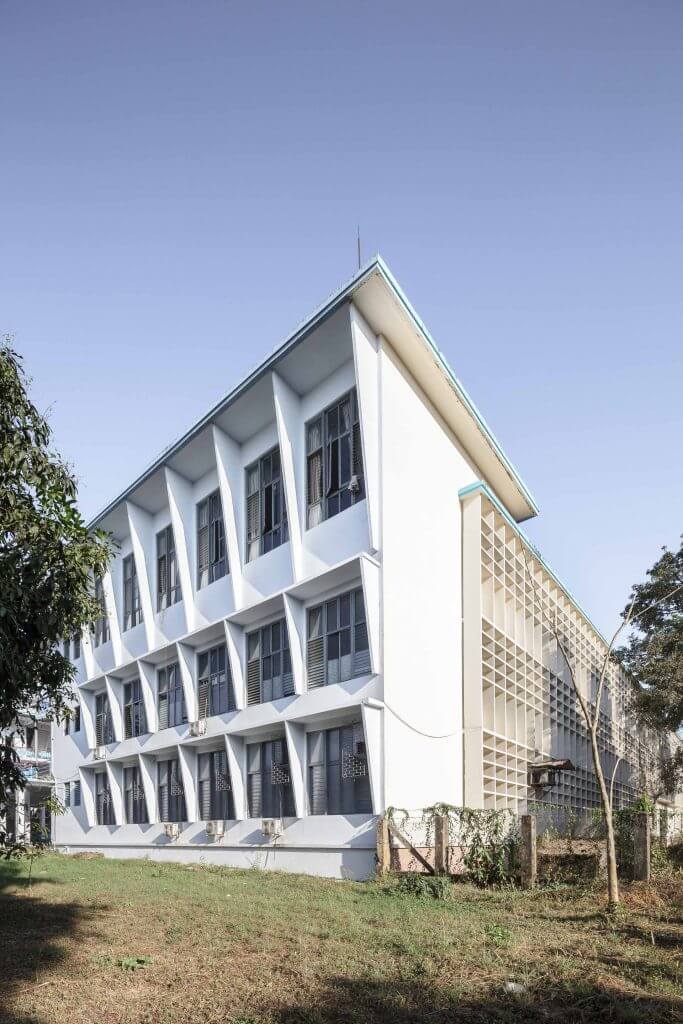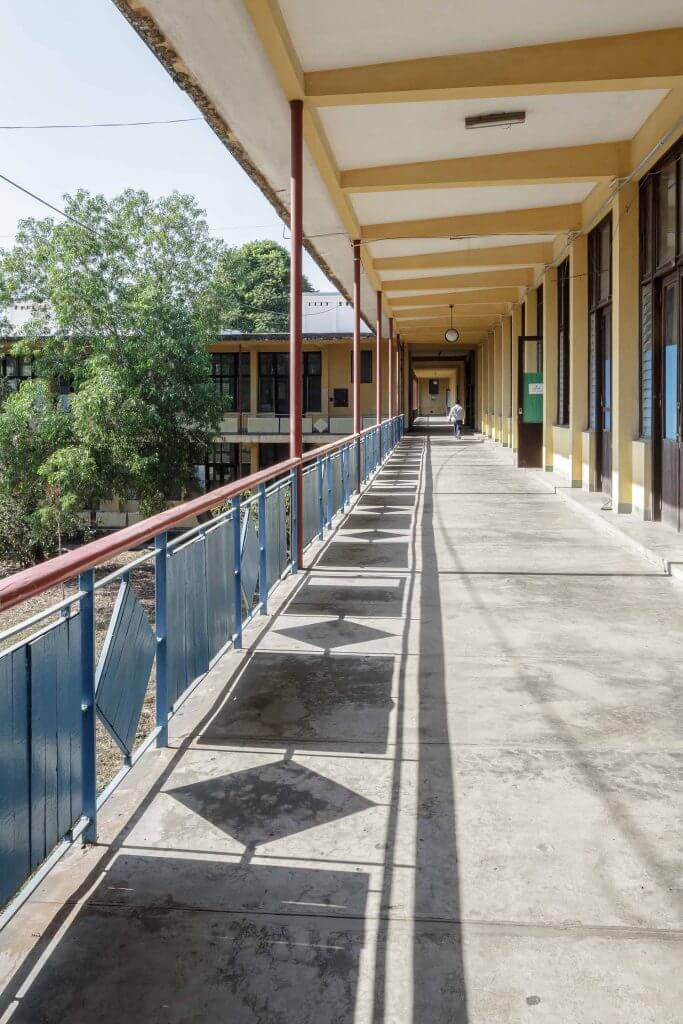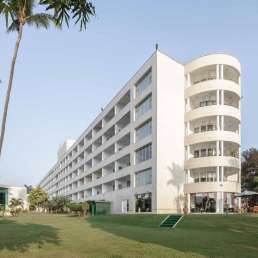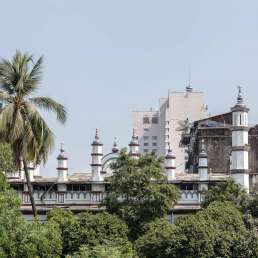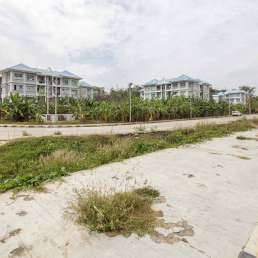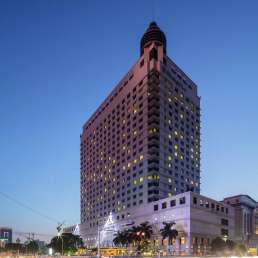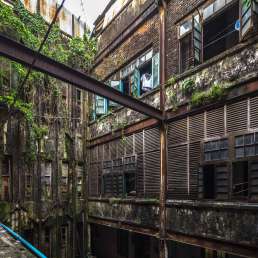Formerly: Rangoon Institute of Technology
Address: Insein Road
Year built: 1958-1961
Architect: Pavel Stenyushin
This major university campus was another gift from the Soviet Union. The Engineering College of Rangoon University moved here upon its completion in 1961. Prior to that, it was housed in the Engineering College, today’s University of Medicine-1 designed by Raglan Squire, which had only been finished a few years before in 1956. Interestingly, the biographies of both Squire (1912–2004) and the Soviet architect, Pavel Stenyushin (1904–1971), have significant parallels. Stenyushin and Squire were each involved in their countries’ reconstruction efforts after the Second World War. Squire planned the conversion of townhouses into apartments in London’s Belgravia, while Stenyushin worked for Mosarkhitektura and designed the city centre of Kursk, a Soviet city almost completely razed during the war. In Kursk, Stenyushin built two pompous buildings on the central Red Square, a hotel and the City Council; both have Neoclassical and more pure Stalinist architectural features. Before the war, Stenyushin also designed a massive “General’s House” on Moscow’s Leningrad Avenue. And just like Squire, he made a name for himself abroad. His Technological University in Yangon preceded later international assignments including the Polytechnic University in Kabul. Political systems and architectural styles divided these men, but their work took eerily parallel paths.
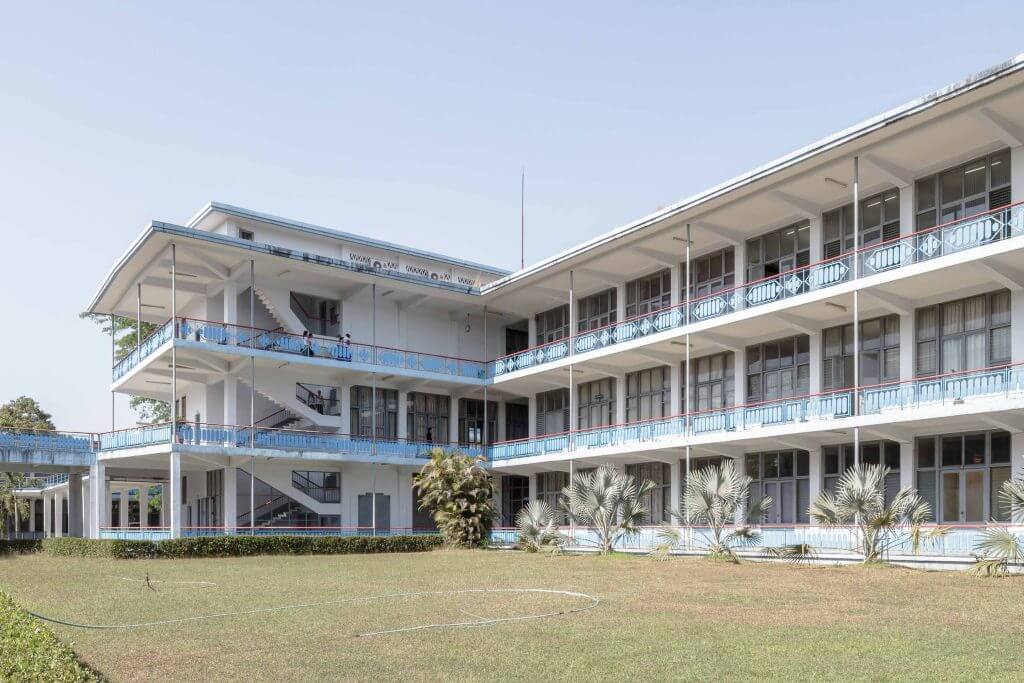
Both brought their aesthetics to Burma but had to adapt to local climatic realities. This led to some similarities in their work, for example the covered walkways and exterior-facing corridors. The main building of the Technological University features an imposing colonnade and large protruding roofs. This peculiar shape explains why some students called this the “university under the table”. Its slightly concave form harmonises with the circular plaza which it concludes towards the north, featuring a large water fountain at its centre. A series of courtyards and open staircases create an airy atmosphere inside the various buildings. Perforated walls perform a similar function. Plaques in Russian and Burmese are placed inside the central columns of the colonnade and commemorate the laying of the foundation stone by former Burmese President U Win Maung on 21 April 1958. Three years later, students moved to this location, rather far away from the centre. Some felt sentimental about the new setting. As one of them—U Myint Khine—recalls:
“On our first day, with renewed hope and vigour, and a feeling of great anticipation, I made my way through the huge, lofty columns of the main entrance. But, I must confess, in all honesty, that I felt a little bit disappointed. The architecture was, if anything, imposing. It was extremely functional, but to me, it was a bit too sterile.
The old Faculty of Engineering buildings we left behind were somewhat airy and light in comparison. The Burmese murals decorating the various façades were a joy to behold during our classroom breaks. The whole aspect was aesthetically very pleasing. All this flashed through my mind as I entered [Rangoon Institute of Technology], but I quickly put it out of my system. Whether pleasing in appearance or not, as I remarked before, it was still functional and solidly designed. If this is the ‘altar’ where I must gain my final ‘rites of passage’ into the world of Engineering, so be it. I will grow to love it and indeed I truly did in the end.”
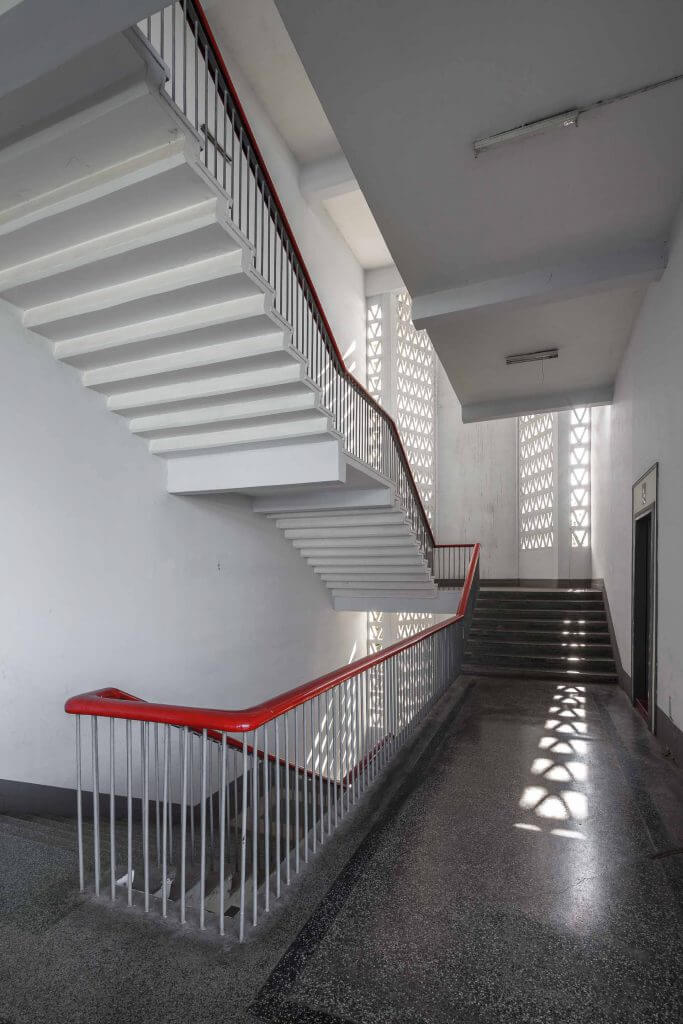
The Soviet Union was among the first countries to recognise independent Burma. But things got off to a rocky start as the Soviets backed communist anti-regime forces in their fight against the government in Yangon. Embassies in both countries only opened in 1951. By 1955, relations had warmed considerably. Prime Minister U Nu went on a two-week tour of the Soviet Union and Eastern Europe, signing trade deals and technical cooperation agreements. Burma pledged to support Soviet foreign policy, including backing Communist Chinese membership of the UN (at that time, Taiwan still represented China there). A high-level Soviet delegation visited Burma in 1955 and Rangoon’s population was told to line the streets and cheer the motorcade. It was during this visit that the agreement to build the Rangoon Institute of Technology was agreed in principle. Three years later, on Khrushchev’s next visit, it was officially presented as a gift of the Soviet people.
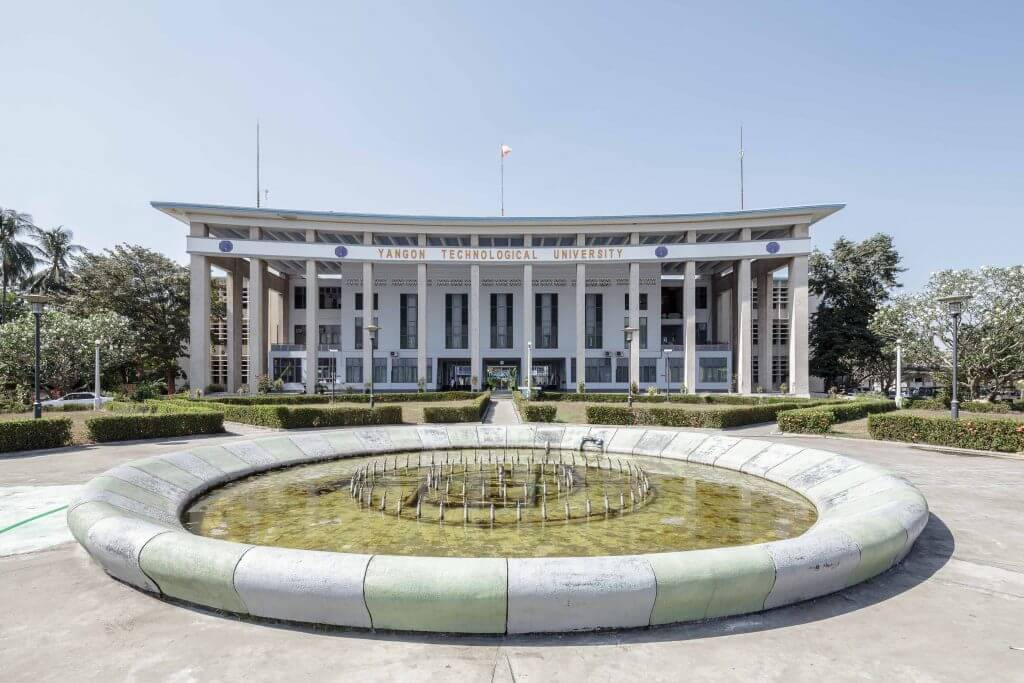
Burma’s embrace of the Soviet Union was pragmatic. It was finding it difficult to sell large quantities of surplus rice on the world markets, and the Soviet Union was an important buyer—although payment was often in kind. US intelligence was worried that “Communist trade, Communist experts and Communist-designed and erected buildings could be followed by Communist arms, Communist ideas, and ultimately, Communist control of this country”. When Ne Win took over power in a military coup in 1962, the socialist period of Burmese post-independence history dawned. But in its Ne Win vintage, this socialism took the country on an inward-looking and isolationist path.
